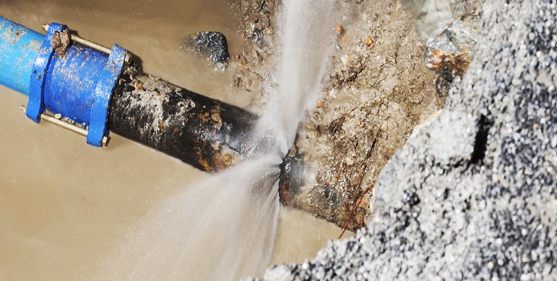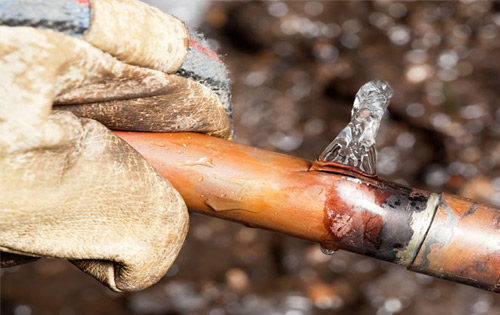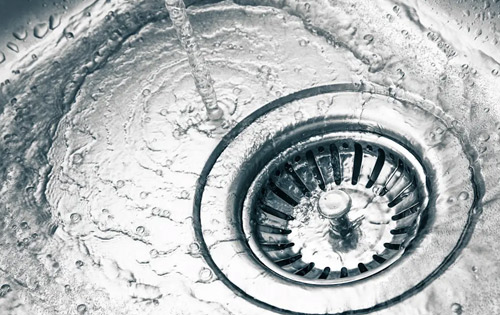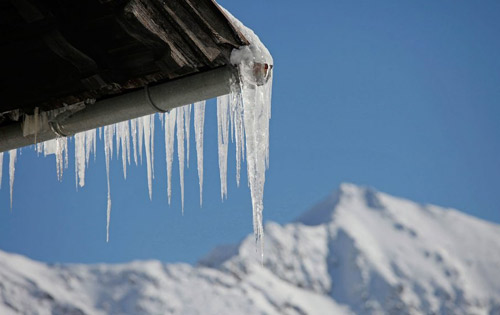PIPES: CHOOSING THE RIGHT REHABILITATION METHOD
The first thing to determine when considering rehabilitation of pipes or manholes is what is the purpose of the rehabilitation. Does the system need structural repair? Does Infiltration/Inflow (I/I) need to be eliminated, does system capacity need improvement? Or a combination? The answers can direct a manager to the most cost effective, efficient use of limited resources.
Aging infrastructures and sanitary sewer overflows (SSO), combined with limited funding and increasingly stringent compliance requirements, make keeping their systems in good working order a daunting task for collection system managers. To accommodate the lack of funds needed to replace large portions of a municipal sanitary sewer system, many managers are investigating techniques for extending the life of their collection system assets through pipe and manhole rehabilitation.
Chemical Grouting
One option for non-structural repair is chemical grouting. Ideally suited to stopping leakage and reducing soil loss, grouting consists of injecting a self-setting grout into structurally sound leaking joints or small wall cracks. The grout travels outside of the joint or manhole wall into surrounding soils and bonds with those soils to create a seal collar of material around the leaking joint or wall defect.
Sliplining
When existing capacity is sufficient, sliplining is a relatively cost-effective rehabilitation method in which a pipe is inserted into an existing line by either pulling or pushing continuous or short-length pipes, frequently HDPE pipe. With traditional sliplining, a lead-in trench is excavated for installation and pipes are butt-welded on the surface of the ground before being winched or jacked into the existing pipe.
Cured-in-Place Pipe (CIPP)
Using a polyester flexible sock or sleeve impregnated with resin that is inverted or winched into the pipe, CIPP liners are considered a trenchless repair. The sock is inverted using winch inversion, water inversion or air (steam) inversion. Inversion allows the liner to conform to the existing pipe contours providing for minor irregularities or slight changes of pipe direction. Increasing the thickness of the polyester sock increases the thickness of the pipe.

Burst/Broken Pipes
Age
In the Charlotte and Greenville areas, our gorgeous old homes and buildings draw tourists from miles away. If you live in an older home, though, make sure that your plumbing isn’t as old as the rest of the house. The same principle applies if you own a historic building. Pipes can wear down with age, and they eventually burst.
Clogs
Our drains collect all sorts of things other than water. Hair, toilet paper, and other items go down the drain all the time. Sometimes, though, those items get stuck. We’ve all dealt with the occasional hair clog, but the really bad clogs can cause pipes to burst. Water builds up behind these clogs, and when the pressure gets too strong, the pipes crack. Stay mindful of drain clogs,and be careful about the items that go down your drains.
Freezing
More often than not, when a pipe bursts, it happens in the winter. Compared to many other places, North Carolina has fairly mild winters. However, that doesn’t mean we don’t experience temperatures below freezing. And when that happens, our pipes can freeze, too. When a pipe freezes, so does the water inside it. Waterexpands as it freezes, putting pressure on the pipe and causing it to crack. During colder times, make sure that warm air can get to your pipes. Open the cupboards under the sinks, and insulate the pipes that aren’t near heat sources.
The Problem with Pipe Water
When groundwater floods your basement or when your sewer line backs up, you’ll notice the problem very quickly. Both of these problems are terrible, but once the water is gone, it’s gone. However, if you have water that’s slowly leaking from a broken pipe, there’s no telling how long you’ve had that problem. The water from leaking pipes can find hidden pockets, slipping through cracks and causing damage behind the scenes. Just because you’ve dried the surface doesn’t mean that you’ve gotten rid of all of the water.
Floor Damage
Floors can take on a lot of the damage from broken pipes. Hardwood floors get bent into odd shapes so that the floorboards don’t fit into their spaces anymore. Laminate floors don’t escape damage, either. Constantly dripping water can wear the lamination off the floors. Carpets, of course, absorb water and develop stains

FACTORS TO CONSIDER WHEN CHOOSING A PLUMBING PIPE
Making decisions about plumbing for your property can be overwhelming, especially if you don’t have any previous plumbing experience. Your plumbing material choice is important, as it provides you with one of our most precious resources: water. By gaining a better understanding of the factors you should take into account when choosing your plumbing pipe material, you will be able to make a more educated decision.
WATER TYPE
Depending on where you live, the water going through your pipes may be corrosive. Corrosive water refers to water that dissolves materials it comes into contact with. Corrosive water is problematic in your home because the last thing you want is your pipes degrading only a few years after they’ve been installed. Although the water itself isn’t harmful, when it corrodes copper and metal pipes, it also dissolves copper and lead into the water supply, which does pose health concerns. A water test conducted by a professional determines the level of acidity in your water source.
PLUMBING USE
The amount of water pressure you require is another important determinant in finding the correct plumbing pipe for your property. Chances are, if you are looking for a plumbing solution in a commercial space, you are seeking high water pressure. To maintain high water pressure, a pipe will need to be wide and durable enough to sustain significant force. Plastic pipes are usually the best option in this case, as they are specifically designed for this use.
SOIL CHARACTERISTICS
The composition of the soil surrounding your pipes has significant effects on their durability. Soil with excess rocks, moisture, and abrasive materials will eventually degrade your pipes. It’s also important to look at the chemical composition of the soil. Sometimes, soil with excess minerals can create a reaction when it comes into contact with certain pipe materials.
EXPOSURE TO SUNLIGHT
Sun has similar effects on pipes as it does to our skin. Ultraviolet (UV) rays deteriorate the surface quality of plastic pipes over time, making them more vulnerable to issues and decreasing their lifespan. Excess exposure to sunlight can also cause problems related to changes in temperature. PVC pipes aren’t used to carry hot water, so it’s not a good idea to have them installed in areas that naturally reach high temperatures. To combat this, many plumbers will use insulating materials to prevent temperature fluctuations affecting pipe quality.

The Most Common Plumbing Problems and When to Call a Professional
Almost every homeowner or renter has a few essential tools on hand to cope with minor plumbing emergencies. Many times, a clogged toilet or slow drain may only need a little elbow grease and a plunger to work as intended. If you’re handy around the house, you can generally tackle a small repair such as changing out a worn washer or replacing a drain cover. However, bigger plumbing repair jobs need professional attention. Trying to repair some common issues such as slow drains or leaking toilets could lead to bigger problems later.
Plumbing Maintenance
One way to prevent costly repairs to your home is a regular maintenance schedule. Because many issues with your pipes sneak up on you, a thorough inspection is the key to catching small problems before they grow. Hidden leaks in sink drains or below water heaters are more than just a nuisance; over time, they can cause structural damage. Water that seeps into sheetrock or plaster contributes to mold growth. Porous tile or wood flooring can discolor or warp when wet.
Routine DIY Maintenance Tasks
Many routine maintenance tasks are simple do-it-yourself jobs. An inspection is the foundation of any maintenance schedule. You may use your sinks and tubs daily, but you might not notice minor concerns unless you set aside time for an inspection. Go through your home and take a look at your plumbing. Examine all exposed pipes, including under sinks and behind toilet tanks, for any signs of moisture. On a humid day, some condensation on a cold metal pipe is normal, so note any dampness and check the pipes again when the home is cooler. Check for signs of corrosion on brass or copper fittings; corrosion occurs more rapidly on damp metal, so corroded connections could reveal a slow leak.
Professional Inspections
Inspections from a certified Bradenton, FL, plumber give you a more in-depth look at your home’s pipes and drains. Your inspector will check the water heater, garbage disposal and every area of your home’s plumbing system. More thorough assessments might include remote video inspection of pipes, lead testing and filter system inspection.
Common Plumbing Repair Jobs
Even the most thorough plumbing maintenance inspection won’t prevent the occasional clog or leak, especially in older homes. The high water table in the Sarasota and Bradenton, FL area also contributes to septic system problems that can affect toilets and drains. Many of these common issues have equally common solutions

Main Types of Plumbing Pipes Used in Homes
Whether hiring a plumber or taking on a do-it-yourself plumbing project, the experience can be confusing because of the choice of several types of plumbing pipes. Eventually, pipes’ uses tend to blend together. Which type of pipe should be used for water supply, drainage, sewer, and even for the exterior? The answer is not as clear as it may have been in the past when the main pipes of choice were galvanized steel or cast-iron.
PEX Pipe
PEX, or cross-linked polyethylene, pipe is one of the newest and most popular pipes to hit the plumbing market. PEX is used only to supply water. PEX is a pipe that is rigid enough to withstand the pressures of water supply but flexible enough to weave throughout walls, ceilings, basements, and crawlspaces. PEX has truly delivered water-supply plumbing into the hands of do-it-yourselfers and professional plumbers.
PVC Pipe
PVC, or polyvinyl chloride, pipe is a drain or vent line type of plumbing pipe. PVC initially gained popularity because it was lighter and easier to work with than traditional galvanized steel pipe. PVC pipe is moderately easy to install and requires little more than a hacksaw and a miter box to cut. PVC glues together with solvents
Rigid Copper Pipe
Rigid copper is often used for water supply lines within the home. Rigid copper is easily cut with a hacksaw or with a special copper tube cutter. The connection is a different matter, as it requires a practiced hand to solder copper pipe together. Rigid copper pipe is great for water supply because it does not come with any health risks.
ABS Pipe
ABS (acrylonitrile butadiene styrene) pipe is mainly used as a vent and drain line. ABS pipe looks very much like PVC pipe, except that it is black and slightly softer.